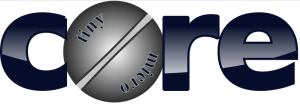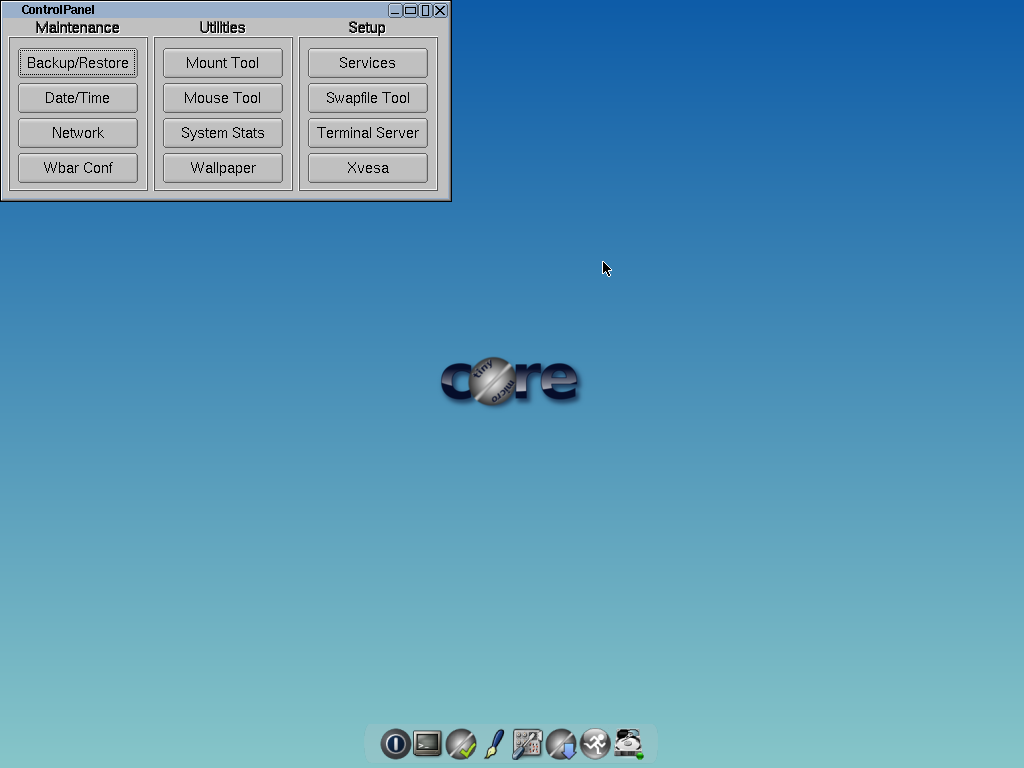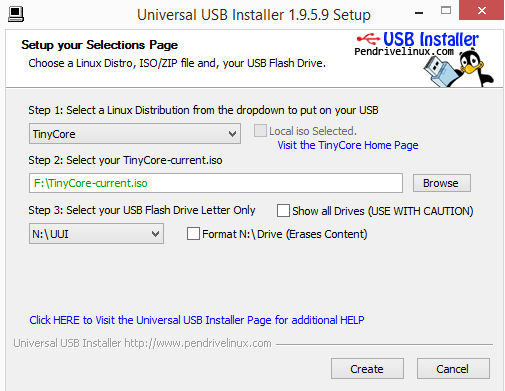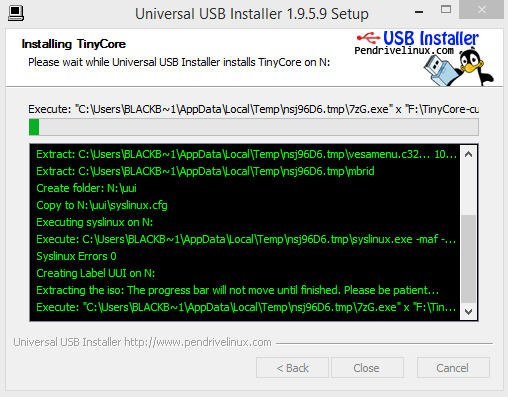Diskimage – Tiny Core Linux (software)
Informatie (ENG)
The Core Project is a highly modular based system with community build extensions.
It starts with a recent Linux kernel, vmlinuz 3.0, and a 5MB core.gz. MicroCore 8MB is simply the kernel + core.gz – this is the foundation for user created desktops, servers, or appliances. TinyCore is simply the kernel + core.gz + Xvesa.tcz|Xorg.tcz + Xprogs +fltk-1.3.tcz + (user’s choice of Window Manager) + wbar.tcz
TinyCore becomes simply an example of what the Core Project can produce, an 12MB FLTK/FLWM desktop.
CorePlus ofers a simple way to get started using the Core philosophy with its included community packaged extensions enabling easy embedded frugal or pendrive installation of the user’s choice of supported desktop, while maintaining the Core principal of mounted extensions with full package management.
It is not a complete desktop nor is all hardware completely supported. It represents only the core needed to boot into a very minimal X desktop typically with wired internet access.
The user has complete control over which applications and/or additional hardware to have supported, be it for a desktop, a netbook, an appliance, or server, selectable by the user by installing additional applications from online repositories, or easily compiling most anything you desire using tools provided.
About Our Project
Our goal is the creation of a nomadic ultra small graphical desktop operating system capable of booting from cdrom, pendrive, or frugally from a hard drive. The desktop boots extremely fast and is able to support additional applications and hardware of the users choice. While Tiny Core always resides in ram, additional applications extensions can either reside in ram, mounted from a persistent storage device, or installed into a persistent storage device.
We invite interested users and developers to explore Tiny Core. Within our forums we have an open developement model. We encourage shared knowledge. We promote community involvement and community built application extensions. Anyone can contribute to our project by packaging their favorite application or hardware support to run in Tiny Core. The Tiny Core Linux Team currently consists of eight members who peruse the forums to assist from answering questions to helping package new extensions.
Why is Tiny Core special?
Tiny Core is:
- Very Small. At 10 megabytes, Tiny Core is 1/400 to 1/100 the size of the most widely used operating systems in the world (even compared to most Linux distros). That makes Tiny Core flexible enough to be stored and run from usb sticks, a just-about-full CD, or even embedded devices. hardware.
- Linux. Tiny Core uses the Linux Kernel and a set of command-line (text interface) tools including busybox.
- A GUI Desktop. Tiny Core has a flexible and fully-customizable Graphical User Interface Desktop. Mouse, keyboard, and screen support basically works out-of-the-box thanks to FLWM, the FLTK Desktop. You can also quickly install and try out a variety of other desktops and interfaces including Fluxbox, XFCE, OpenBox, IceWM, Joe’s WM, LXDE, and others.
- Minimal. Tiny Core does not ‘ship’ with most end-user software. Instead, Tiny Core lets you quickly and easily compare, select, download, and install your preferred web browser, word processor, music player, and other software.
- Unusually Stable. Every time Tiny Core loads, it is brand-spanking new. That means Tiny Core just doesn’t get a blue screen. Instead of installing programs into the system file space and risking damage to the system files, Tiny Core uses program ‘extensions’ that are re-prepared at each reboot … and they are prepared fast.
- Unusually Fast. Unlike most operating systems, the Tiny Core can run completely from RAM. Individuals with RAM to spare can even use Tiny Core to load and run their programs from RAM (you didn’t know your computer could run Open Office and Firefox so quick). Experienced users can still install Tiny Core to disk, but Tiny Core can run in 48 megabytes of RAM … or less.
- Internet ready. Tiny Core almost always finds your network card right right away. You’ll be adding applications and tools after an unusually quick boot. You can even come back here and ransack the forums if you find you need help.
- Available even smaller. Linophiles that get things done without a GUI can get the MicroCore, a version of Tiny Core without X that is under 7 MB.
- An open source community. Tiny Core is under active community development, led by a team of really dedicated people. You can find answers and ask questions in the forum, add your own experiences to the wiki, help add extensions (programs) to the Tiny Core Repository, and read enough Tiny Core to make your head spin.
| Core | Core is the base system which provides only a command line interface and is therefore recommended for experienced users only. Command line tools are provided so that extensions can be added to create a system with a graphical desktop environment. Ideal for servers, appliances, and custom desktops. |
| TinyCore | TinyCore is the recommended option for new users who have a wired network connection. It includes the base Core system plus X/GUI extensions for a dynamic FLTK/FLWM graphical desktop environment. |
| CorePlus | CorePlus is an installation image and not the distribution. It is recommended for new users who only have access to a wireless network or who use a non-US keyboard layout. It includes the base Core System and installation tools to provide for the setup with the following options: Choice of 7 Window Managers, Wireless support via many firmware files and ndiswrapper, non-US keyboard support, and a remastering tool. |
Tinycore bootable op een media zetten
Tinycore kan je op een USB stick of CF kaart zetten en starten vanaf boot.
Wat heb je nodig?
Installatie
1) Start Universal USB installer.
2) Selecteer Tinycore.
3) Selecteer het ISO bestand van .
4) Selecteer de schijf waarnaartoe te schrijven e klik op “create”.
De installatie wordt uitgevoerd:
De bestanden worden uitgepakt op de schijf:
Ps. In het detail scherm zie je ook hoe de schijf bootable wordt gemaakt:
|
1 2 3 4 5 6 7 8 9 10 11 12 13 14 15 16 17 18 19 20 21 22 23 24 25 26 27 28 29 30 |
Extract: AppData\Local\Temp\nsj96D6.tmp\syslinux.exe... 100% Extract: AppData\Local\Temp\nsj96D6.tmp\syslinux.cfg... 100% Extract: AppData\Local\Temp\nsj96D6.tmp\7zG.exe... 100% Extract: AppData\Local\Temp\nsj96D6.tmp\7z.dll... 100% Extract: AppData\Local\Temp\nsj96D6.tmp\chain.c32... 100% Extract: AppData\Local\Temp\nsj96D6.tmp\menu.c32... 100% Extract: AppData\Local\Temp\nsj96D6.tmp\vesamenu.c32... 100% Extract: AppData\Local\Temp\nsj96D6.tmp\mbrid Create folder: N:\uui Copy to N:\uui\syslinux.cfg Executing syslinux on N: Execute: AppData\Local\Temp\nsj96D6.tmp\syslinux.exe -maf -d /uui N: Syslinux Errors 0 Creating Label UUI on N: Extracting the iso: The progress bar will not move until finished. Please be patient... Execute: "AppData\Local\Temp\nsj96D6.tmp\7zG.exe" x "F:\TinyCore-current.iso" -o"N:\" -y -x![BOOT]* Editing Configuration Files Extract: AppData\Local\Temp\nsj96D6.tmp\Uni-USB-Installer-Copying.txt... 100% Extract: AppData\Local\Temp\nsj96D6.tmp\Uni-USB-Installer-Readme.txt... 100% Extract: AppData\Local\Temp\nsj96D6.tmp\license.txt... 100% AppData\Local\Temp\nsj96D6.tmp\Uni-USB-Installer-Copying.txt -> N:\Uni-USB-Installer-Copying.txt 1 File(s) copied AppData\Local\Temp\nsj96D6.tmp\Uni-USB-Installer-Readme.txt -> N:\Uni-USB-Installer-Readme.txt 1 File(s) copied AppData\Local\Temp\nsj96D6.tmp\license.txt -> N:\license.txt 1 File(s) copied Checking if we need to replace vesamenu.c32, menu.c32, and chain.c32 Found menu.c32 at N:\boot\isolinux\menu.c32 Copy to N:\boot\isolinux\menu.c32 Installation Done, Process is Complete! |
[#/diskimages/tinycore” ]






